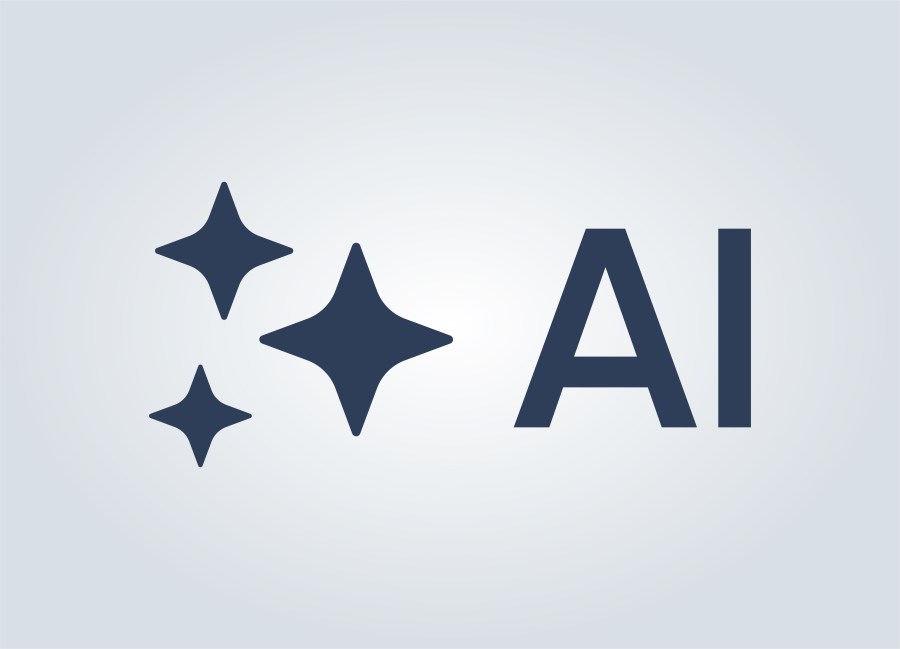
(NEXSTAR) — Have you noticed this? As more and more technology companies roll out their own AI products and services, there’s one thing that’s been pretty common among many of the competitors: they all use the sparkle emoji in relation to the use of artificial intelligence.
But why?
Currently, you can see a sparkle emoji beside “AI Overview” Google suggestions, which appear at the top of results whenever you perform a google search. These generative responses have many businesses and organizations worried about search traffic — in addition to the fact that AI Overview recently suggested that drivers remedy their faulty blinkers by “replacing blinker fluid.” Sparkle emojis can also be found in the logo of Google’s Gemini chatbot (previously known as “Bard”), Spotify’s shuffle button, Adobe Express, OpenAI’s GPT-4, and Zoom’s AI Companion note-taker.
Though the emoji hasn’t always been associated with AI, the trend appears to have started sometime around 2018. As explained by YouTuber David Imel, one of the earliest examples of AI sparkling was the 2018 introduction of the “sparkle button” on the social media network then known as Twitter. Back then, the Twitter sparkle button allowed users the ability to switch between chronological tweets and algorithmically selected “Top Tweets.” Then, in 2020, there was Google Photos’ Enhance feature, which let users touch up photos using AI, and it also included sparkles.
But all that is happening today.
Where did the sparkle emoji come from? And what was it supposed to mean?
Going back to the origins of the sparkle emoji will lead you to Japan in 1999. As evidenced by the Metropolitan Museum of Art‘s previous art installation called “Inbox: The Original Emoji, by Shigetaka Kurita,” the sparkle emoji was one of 176 original emoji released by Japanese telecom company NTT DOCOMO. The emoji was created by tech designer Kurita, whose collection of emoji were intended for phones and pagers, in addition to email.
According to Kurita, who sat down with Imel to discuss his emojis and their intention, the original roster of images were inspired by manga. Originally, as told by Kurita, the sparkle emoji could be found in manga to represent both sweat droplets and sparkles, in addition to being used as a way to represent something sparkling.
“In manga, when someone wants to represent something like a twinkle in someone’s eye or a shiny object, or just to emphasize that an object is sparkly, they use that kind of mark,” he explained, saying that in Japan, the use of sparkles are generally used non-ironically to express joy or beauty.

Kurita wasn’t aware that many English-speaking countries use sparkles in relation to AI products, as the symbol doesn’t currently have the AI connotation in Japan. He told Imel that while he doesn’t think Japan would have initially chosen it as a symbol of AI technology, he sees Japan accepting its usage once AI tech is more solidly ensconced in the country.
As explained by Imel, as mobile technology/keyboards advanced, the companies in charge of emoji boards began to streamline, to make sure emojis could translate across various systems. This included integrating some Japanese emoji — this is how Kurita’s sparkles made their way onto your phone.
How did the sparkle emoji come to be used for AI?
It’s difficult to pinpoint exactly who was the first to use sparkles in relation to AI technology, but the switch was gradual, explains Ed Burnette, founder and CEO of employer resource HiddenMind AI. In a newsletter posted to LinkedIn late last year, Burnette opined that the AI-sparkles connection “started subtly.”
“Articles discussing AI breakthroughs adopted the emoji as a shorthand for the magic and innovation inherent in the technology,” wrote Burnette. “Gradually, ✨ became synonymous with the intelligence and magic that AI brings to our digital experiences.”
Jane Solomon, senior emoji lexicographer at reference database Emojipedia, previously told Quartz a similar thought, saying she believes the use of sparkles is a way of making new features that users might not understand seem more “magical” and less threatening to those who might not be fans of AI.
“At the very least, it’s a subtle reference that’s unlikely to scare anyone who might otherwise be skeptical of AI technology (for example, the authors who have been filing lawsuits against generative AI companies because their work is being used to train AI models, without compensation or permission),” said Solomon.
The introduction of AI technology is still in its infancy, despite the fact that it has been in the works for decades before today. Nevertheless, it’s still much too early to know how AI will affect everyday people in the long run.
For now, the co-opting of the emoji for AI — an already controversial technology — is also controversial among people who previously loved the sparkle emoji and don’t want an association to exist between the two.
“I hate that the sparkle emoji just means ‘AI’ now,” wrote one X user just this week. “Anyone found an alternative anywhere near as versatile and vibey as ✨?” Meanwhile, another wrote on May 13: “I’m reclaiming the sparkle emoji. Who even is AI? I don’t know her ✨ Sparkle supremacy.”
Suggest a Correction
